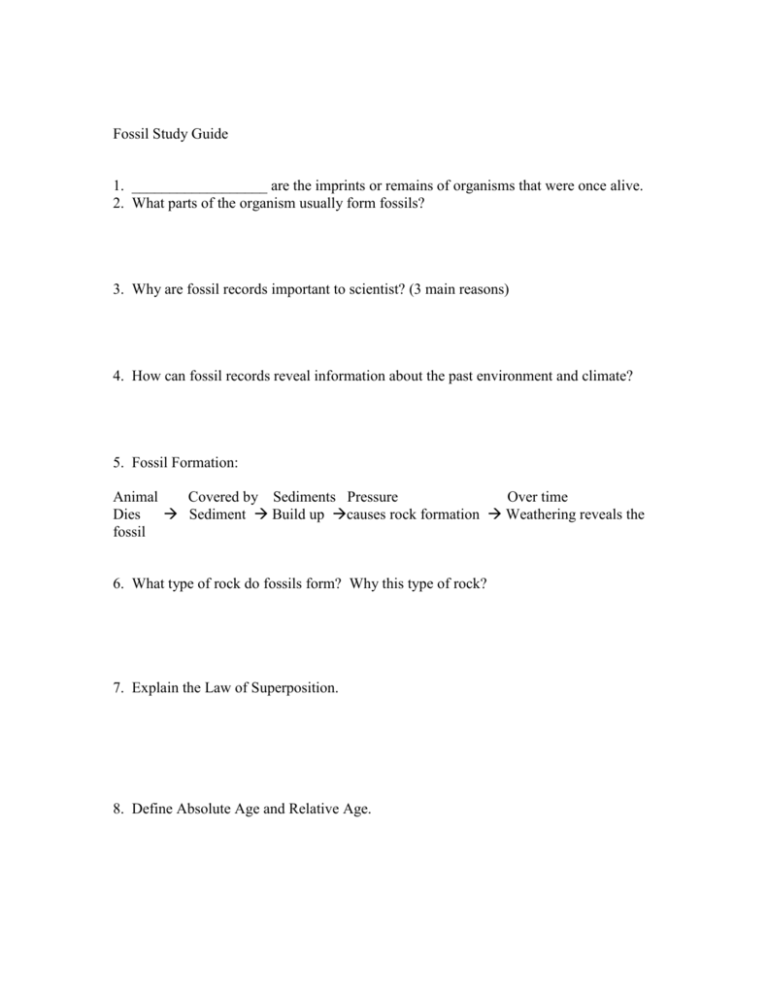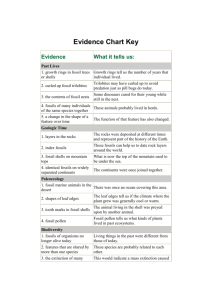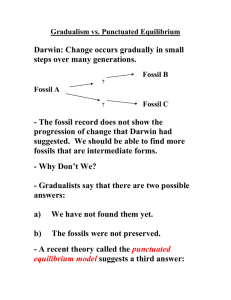Fossil Study Guide
advertisement

Fossil Study Guide 1. __________________ are the imprints or remains of organisms that were once alive. 2. What parts of the organism usually form fossils? 3. Why are fossil records important to scientist? (3 main reasons) 4. How can fossil records reveal information about the past environment and climate? 5. Fossil Formation: Animal Covered by Sediments Pressure Over time Dies Sediment Build up causes rock formation Weathering reveals the fossil 6. What type of rock do fossils form? Why this type of rock? 7. Explain the Law of Superposition. 8. Define Absolute Age and Relative Age. 9. Why are index fossils important to scientist? 10. What are five ways fossils are formed? 11. What is a trace fossil? Why are these important to scientists? Give an examples. 12. What is extinction? How many of past species are extinct (percentage)? What could cause extinction of species? Questions: 1. Scientist find an abundance of fossils in similar aged rock layer around Earth. The number of fossils decreased in the rocks above those layers. Which of the following would explain that decrease? a. increase food supply b. a drought in what is now Africa c. increased life expectancy d. start of an ice age 2. Which of the following is an example of a relative age? a. 30,000 years ago b. in 300 AD c. in the beginning of the Jurassic Period d. after the extinction of trilobites 3. A fossil dig in a desert finds a large number of fossils of marine plants and animals more than 200 million years old. What is the MOST LIKELY explanation for this find? a. the area was covered by ocean in the past b. the area was a dumping ground for humans c. the area used to receive rainfall d. a glacier once covered the desert









